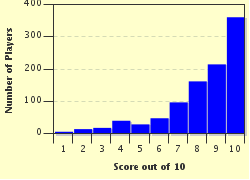Quiz Answer Key and Fun Facts
1. Mohair and cashmere fibers are highly prized in garment making. From the coat of which ungulate do they come?
2. Truffles are a variety of fungus that grow in the earth in a symbiotic relationship with the root zones of several types of trees including beech and oak. Which animal has been used to hunt out these highly prized delicacies since the fifteenth century and perhaps even back to Roman times?
3. These large animals are found in the subarctic region and are semi-domesticated. They are used for transport and as food, and their hides are a vital source of clothing. So what are these antlered animals, nine of whom are also reputed to tow a special sleigh in late December?
4. Not only do these South American mammals from the camel family produce top class wool, but single animals can also be extremely effective guards of flocks of sheep against predators. What is this long-necked, highly social animal that is now found all over the world?
5. These large, horned, bovine animals have been domesticated in South-East Asia for over 5,000 years. It is estimated they provide up to 20-30% of the farm power in countries including Thailand and Laos and are common in many other parts of the world. So what are these animals, whose milk with high fat content is often the preferred raw material for mozzarella cheese?
6. This inquisitive mammal of the Mustelid family has been domesticated for over 2,500 years. Although they can make excellent pets, their prime use is in hunting, where their small stature allows them to chase rabbits and rodents through burrows. What is this animal whose name now has a general meaning of 'searching and hunting'?
7. Although smaller than its African counterpart, this strong animal is used for heavy hauling in many countries in Asia. What is the name of this pachyderm that is always a favorite sight for tourists too?
8. Camels are well adapted to living in the hot, dry climates of the Middle-East, Arabia, central Asia and after being introduced in the 19th century, central Australia. They provide meat, milk and transport for humans and their goods. Perhaps their most famous attribute is the hump (Dromedary) or twin humps (Bactrian) on their backs. What is stored in these humps that allow camels to survive their harsh environment?
9. This long-haired bovine is found is in the mountainous regions of central Asia, Tibet, Mongolia and into Russia. These animals have been domesticated for several thousand years and provide meat, milk and fiber for clothing as well as providing labor on farms. What common name is given to the animal called 'Bos grunniens' by zoologists?
10. These small carnivores live in Africa and southern Eurasia. They can be domesticated and kept as pets although this is outlawed in some parts of the world. They are famed for their ability to fight and kill poisonous snakes. So what is the name of this small mammal, whose literary claim to fame is 'Rikki-Tikki-Tavi' in Kipling's 'The Jungle Book'?
Source: Author
MikeMaster99
This quiz was reviewed by FunTrivia editor
Tizzabelle before going online.
Any errors found in FunTrivia content are routinely corrected through our feedback system.

